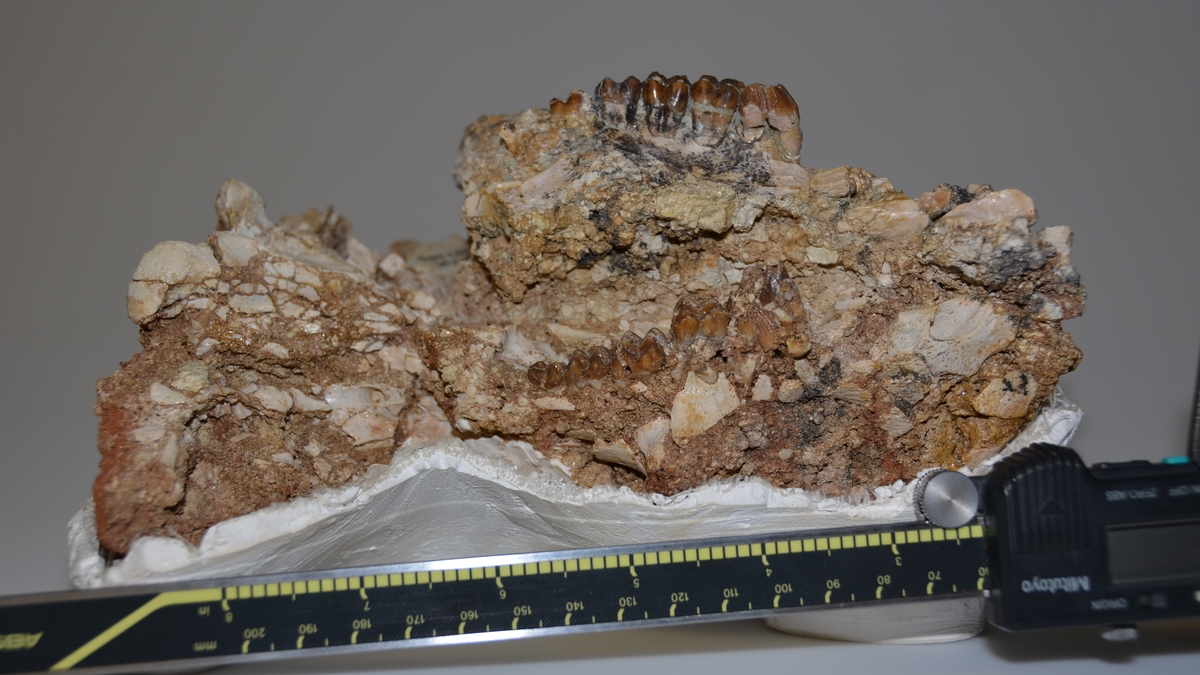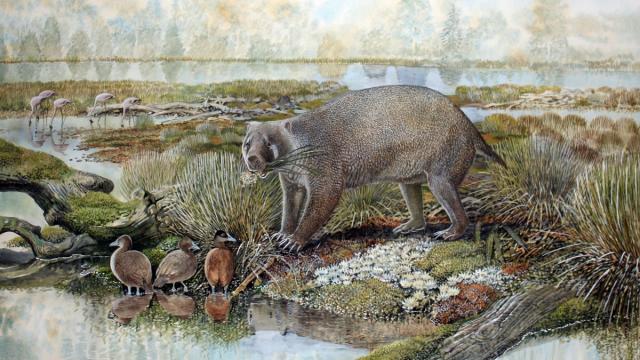In 1973, in a dry salt lake bed in South Australia’s remote desert, the skeleton of a pre-historic mammal was stumbled upon. It took 47 years but the remains have now finally been identified as a previously undiscovered wombat, weighing in at a hefty 150 kilograms.
The chonky wombat, called Mukupirna meaning “big bones” in the Dieri and Malyangapa languages, is estimated to have roamed the Australian continent around 25 million years ago. It was around five-times the size of modern-day wombats and weighed somewhere between 143 and 171 kilograms, according to the findings published in Nature’s Scientific Reports.
[related_content first=”1206034″]
The discovery was a milestone as the time but the Mukupirna’s skeleton remained unidentified in a United States museum for decades until recently. The study determined the fossil was so unique compared to other known specimens from the period, a new family classification was created for it.

But it was a matter of luck Mukupirna was ever found at Al. Professor Mike Archer from UNSW Science, who co-authored the paper, was there when the discovery was first made all those decades ago.
“We found it by probing the dry flat surface of the Lake with a thin metal pole, like acupuncturing the skin of Mother Earth,” Professor Archer said in the press release.
“We only excavated downwards into the clay if the pole contacted something hard below the surface — and in this case it turned out to be the articulated skeleton of a most mysterious new creature.”
Mukupirna was likely a big, friendly giant
Despite its ominous size, the researchers maintain it was likely the nice guy of pre-historic Australia. Its teeth shape suggest it was a plant eater and liked to dig around the surface unlike the burrowing habits of the modern-day wombat.
The BFG status of the chonk shouldn’t understate its power, however, the paper’s lead researcher Dr Robin Beck said.
“Mukupirna clearly was an impressive, powerful beast, at least three times larger than modern wombats,” Dr Beck said.
“It probably lived in an open forest environment without grasses, and developed teeth that would have allowed it to feed on sedges, roots, and tubers that it could have dug up with its powerful front legs.”
The discovery works to deepen our understanding of how Australia’s megafauna evolved over time. It suggests the big boys of ancient Australia — including the two-tonne bear-looking Diprotodon, which became extinct around 50,000 years ago — had evolved consistently over the millions of years. The findings found the bigger the species was, the more times it seemed to evolve.
“Koalas and wombats are amazing animals,” Dr Beck said.
“But animals like Mukupirna show that their extinct relatives were even more extraordinary, and many of them were giants.”
[related_content first=”1222634″]
